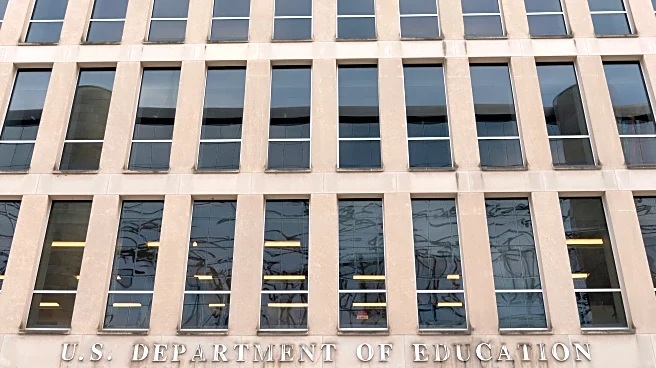What's Happening?
The Trump administration has agreed to resume student loan forgiveness for thousands of borrowers, reversing a previous slowdown in loan discharges. This decision follows a lawsuit by the American Federation
of Teachers, which accused the administration of halting loan discharges for borrowers who had made qualifying payments under federal loan programs. The agreement requires the Department of Education to honor obligations for Income-Based Repayment, Income-Contingent Repayment, and Pay As You Earn borrowers. This move is expected to provide relief to borrowers and potentially invigorate the housing market by enabling more individuals to become homebuyers.
Why It's Important?
The resumption of student loan forgiveness is significant as it could alleviate financial burdens for many borrowers, potentially increasing their ability to purchase homes. With student loan debt often cited as a barrier to homeownership, this development may help improve the housing market by increasing the number of eligible buyers. Additionally, the decision not to tax the forgiven balance prevents a potential financial setback for borrowers. This move aligns with broader economic goals of enhancing consumer spending and stabilizing the housing market, which has been affected by high mortgage rates and inflated home prices.
What's Next?
The agreement does not extend to borrowers on the Saving on a Valuable Education Plan, who remain in forbearance due to a court ruling. The administration's decision may prompt further legal and policy discussions regarding student loan forgiveness and its impact on the economy. Stakeholders, including borrowers, housing market participants, and policymakers, will likely monitor the implementation of this agreement and its effects on the housing market and broader economic conditions.
Beyond the Headlines
The decision to resume student loan forgiveness highlights ongoing debates about the role of federal loan programs in economic mobility and financial stability. It underscores the importance of addressing student debt as a factor in economic inequality and access to homeownership. The move may also influence future policy discussions on education financing and housing market strategies.













